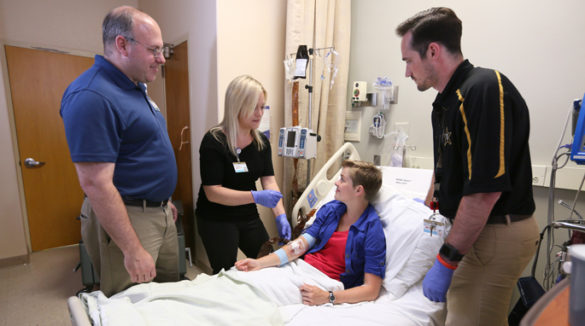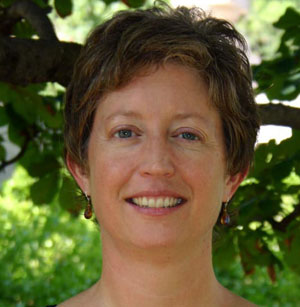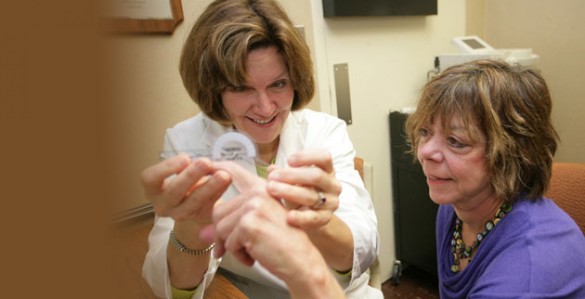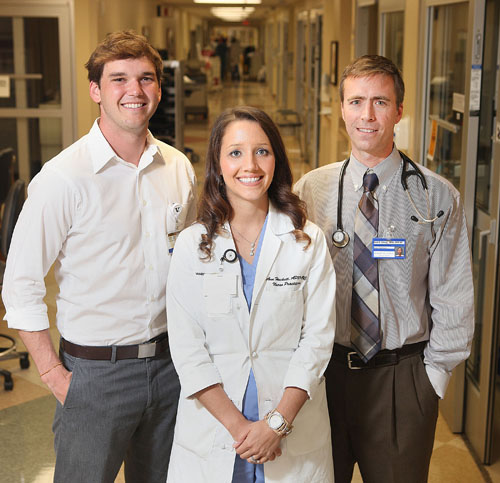
Eighteen-year-old Grace Long had just been accepted at the renowned United States Naval Academy, with plans to become a nuclear engineering officer. Then, she learned she had type 1 diabetes, an immediate disqualifier for military service.
Rather than allow the news to derail her, Long immediately began to investigate how she could spin her disappointment into a positive. She and her mother, a former family practice physician, searched for a way her diagnosis could benefit science through participation in a research study. Long is now part of a Sanford Research-led, multisite clinical trial that uses a child’s own immune system to create a therapy that has the potential to diminish the severity of type 1 diabetes. She is the first individual to be enrolled in the study at the Vanderbilt University Medical Center (VUMC) site.
“If I was going to be diagnosed with something like this, something good might has well come out of it,” Long said. “I live in Virginia, and there wasn’t really any study available in my area. I love the idea of this specific study, as opposed to many of the other studies that are looking at the use of immunosuppressant drugs. The idea of taking something my own body already has and making it better was interesting to me.”
The Sanford Project: T-Rex Study (NCT02691247), conducted in collaboration with Caladrius Biosciences Inc., is the first of its kind in the United States and is named after the body’s regulatory T cells, or Treg cells, that regulate the immune system. Treg cells are harvested from a study participant’s blood, then multiplied in a laboratory to create an investigational treatment called CLBS03. The CLBS03 is then given back to the same patient intravenously. Study participants are children, ages 8 to 17, who have recently been diagnosed with type 1 diabetes. Long was still 17 when she began the study, so she met the criteria.
Type 1 diabetes is an autoimmune disease in which a person’s body attacks and destroys the insulin-producing beta cells in the pancreas. Individuals with type 1 diabetes have been shown to have fewer Treg cells than others without the disease. Investigators hope the investigational treatment can prevent the immune system from continuing to destroy beta cells.
“Type 1 diabetes has to be monitored and managed daily, which can be especially challenging for children and their families,” said pediatric endocrinologist Daniel Moore, M.D., Ph.D., the principal investigator for the Vanderbilt-based study. “Here at Vanderbilt University Medical Center, we diagnose close to 300 new children every year with type 1 diabetes, and we’re following about 3,000 children who already have the diagnosis.”
The study is a randomized, placebo-controlled, double-blind phase 2 trial, meaning a randomly assigned portion of participants receive CLBS03 while others receive a placebo, but no one — including the researchers – knows which they are receiving. Using a placebo helps determine if the treatment works better than not receiving the treatment at all. A phase 2 trial helps determine the treatment’s most efficient dose and if it is well tolerated.
“We know now, from research that’s been done here at Vanderbilt and elsewhere, that early in the process of diabetes, your body can still make quite a bit of insulin, so that’s a wonderful opportunity to intervene,” Moore said. “If we intervene when an individual is just beginning to develop diabetes, and we can prevent the immune process from progressing, then our hope is that we can lessen the severity of the disease. Even if people still have to take some insulin therapy afterward, they’re likely to have fewer episodes of low blood sugar, and they’re likely to have fewer long-term complications.”
The trial is expected to include more than 100 children across 15 sites in the United States and could take two years or more to complete. The key criteria a child must meet to participate are being 8-17 years old, weighing at least 66 pounds, and they must be diagnosed with type 1 diabetes within 100 days of the study treatment. If you’re interested in this clinical trial, contact Clinical Research Manager Faith Brendle, R.N., at 615-875-6150 or faith.brendle@vanderbilt.edu.
As for Long, she’s already re-set her life’s course. She received an unexpected email from Texas A&M University soon after she learned she had diabetes. She was offered a scholarship to attend the university to study nuclear engineering, and she’s heading there in the fall.
“She’s made me so proud,” said her mother, Martine Long, who was diagnosed with type 1 diabetes when she was 2 years old. “A diagnosis like this can come along to someone of her age and just rock her world, but she’s had a level head about it. She’s looking at it as an opportunity to use something that happened to her in a very constructive way.”















